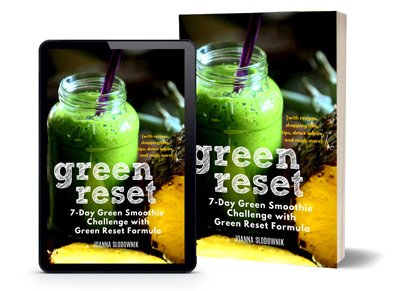I love vanilla flavor. Even though it’s not an essential ingredient in smoothies or other recipes (and I don’t think it has any significant health benefits), it’s certainly one of the most delicious additions.
Vanilla extract is an ingredient in so many cooking and baking recipes that it’s almost automatic to add it in when you’re making cookies or pancakes, so when you see the words “vanilla extract” replaced with “vanilla bean paste” you might have to do a double take before you realize that these are quite the same thing.
So what’s the difference between the two?
What is Vanilla Bean Paste?
I often use vanilla extract in my recipes, but I was not familiar with vanilla paste until a couple of weeks ago. The first time I heard and saw vanilla paste was a couple of weeks ago, when my husband brought me a jar of vanilla paste from his sailing trip in Tahiti.
It turns out that vanilla bean paste is delicious! It is much thicker than vanilla extract; it’s actually a like thick syrup. While the taste is probably a bit strong (not to mention expensive) to, for example, pour on your pancakes, but it’s delicious when added to baked goods or pancakes. You can use the paste in place of vanilla extract in any recipe where you want the beans to shine.

Vanilla extract is made by infusing vanilla into alcohol, which bakes off leaving the vanilla flavor behind. Vanilla bean paste is made by infusing vanilla beans into a thick, sweet syrup made with sugar, water and some sort of thickener. The main distinction is is that the vanilla beans are scraped into the paste, so you get all of those lovely little vanilla bean specks in whatever you’re baking along with the vanilla flavor!
Vanilla bean paste can often be found at specialty stores, and you can find it online easily, as well. It can be used in place of vanilla extract in any recipe. I particularly like to use it in things like banana smoothie with vanilla, vanilla pudding (like this chia seed pudding) and vanilla ice cream.

The Story of Vanilla
There is actually quite an interesting story behind vanilla. It’s one of the few crops that need to be hand-pollinated to produce fruit.
The flowers can be naturally pollinated only by a specific Melipone bee that is only found in Mexico. Thanks to this bee, Mexico enjoyed for a long time a with a monopoly on vanilla production, until a substitute was found for them. The vines would grow, but would not fruit outside of Mexico. Growers tried to bring this bee into other growing locales, to no avail.
The only way to produce fruits without the bees is artificial pollination. And today, even in Mexico, hand pollination is used extensively.
In 1836, botanist Charles François Antoine Morren was drinking coffee on a patio in Papantla (in Veracruz, Mexico) and noticed black bees flying around the vanilla flowers next to his table. He watched their actions closely as they would land and work their way under a flap inside the flower, transferring pollen in the process. Within hours, the flowers closed and several days later, Morren noticed vanilla pods beginning to form. Morren immediately began experimenting with hand pollination. A few years later in 1841, a simple and efficient artificial hand-pollination method was developed by a 12-year-old slave named Edmond Albius on Réunion, a method still used today. Using a beveled sliver of bamboo,[18] an agricultural worker lifts the membrane separating the anther and the stigma, then, using the thumb, transfers the pollinia from the anther to the stigma. The flower, self-pollinated, will then produce a fruit. The vanilla flower lasts about one day, sometimes less, so growers have to inspect their plantations every day for open flowers, a labor-intensive task. (via http://en.wikipedia.org/wiki/Vanilla)
Types of Vanilla
Bourbon vanilla or Bourbon-Madagascar vanilla, produced from V. planifolia plants introduced from the Americas, is the term used for vanilla from Indian Ocean islands such as Madagascar, the Comoros, and Réunion, formerly the Île Bourbon. It is also used to describe the distinctive vanilla flavor derived from V. planifolia grown successfully in tropical countries such as India.
Mexican vanilla, made from the native V. planifolia, is produced in much less quantity and marketed as the vanilla from the land of its origin. Vanilla sold in tourist markets around Mexico is sometimes not actual vanilla extract, but is mixed with an extract of the tonka bean, which contains coumarin. Tonka bean extract smells and tastes like vanilla, but coumarin has been shown to cause liver damage in lab animals and is banned in food in the US by the FDA.
Tahitian vanilla is the name for vanilla from French Polynesia, made with the V. tahitiensis strain. Genetic analysis shows this species is possibly a cultivar from a hybrid-cross of V. planifolia and V. odorata. The species was introduced by French Admiral François Alphonse Hamelin to French Polynesia from the Philippines, where it was introduced from Guatemala by the Manila Galleon trade.
West Indian vanilla is made from the V. pompona strain grown in the Caribbean and Central and South America.
The term French vanilla is often used to designate preparations with a strong vanilla aroma, contain vanilla grains and may also contain eggs (especially egg yolks).
Questions? Comments? Suggestions?
If you have a favorite recipe, why not submit it here in the comment section of this smoothie recipes blog for others to enjoy too!
I also welcome any comments, questions and suggestions. Thanks!

